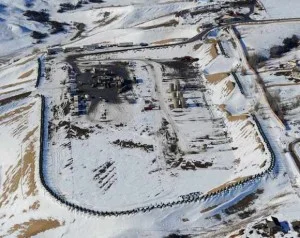Bakken production slipped in November for the first time in almost two years. Production was down a little more than 2% when comparing an equal 30 days from October to November. The culprit was likely the snowiest day in over 100 years. Parts of ND had several inches of snowfall on November 10th.
It's hard to move crews and trucks when there is that much snow on the ground and a lot of Bakken crude is gathered by trucks before it makes its way into pipelines and rail systems.
I suspect we'll see a bounce in December and continued growth in 2013. Remember the harsh winter of 2008-2009. Production was a little more than 200,000 b/d in December, but harsh conditions limited operations and production fell almost 20,000 b/d during the winter. It took until May of 2009 to make back the losses. This dip won't be as serious, but if the snow keeps coming you shouldn't be surprised by seasonal dips.
While the Bakken rig count is down 20% from its peak, we don't believe that is enough to cause this decline. More than 200 wells were permitted in November and well spuds peaked in December. More than 290 wells were spud during December 2012. That's almost 40 more wells than the average for 2012. More well spuds with fewer rigs? Sounds like we're about to see just how efficient operators can be as pad drilling expands.

